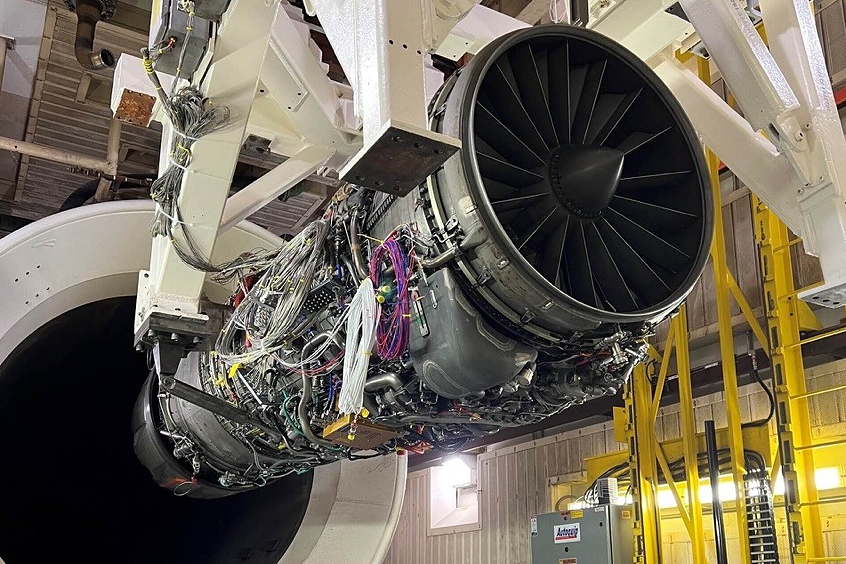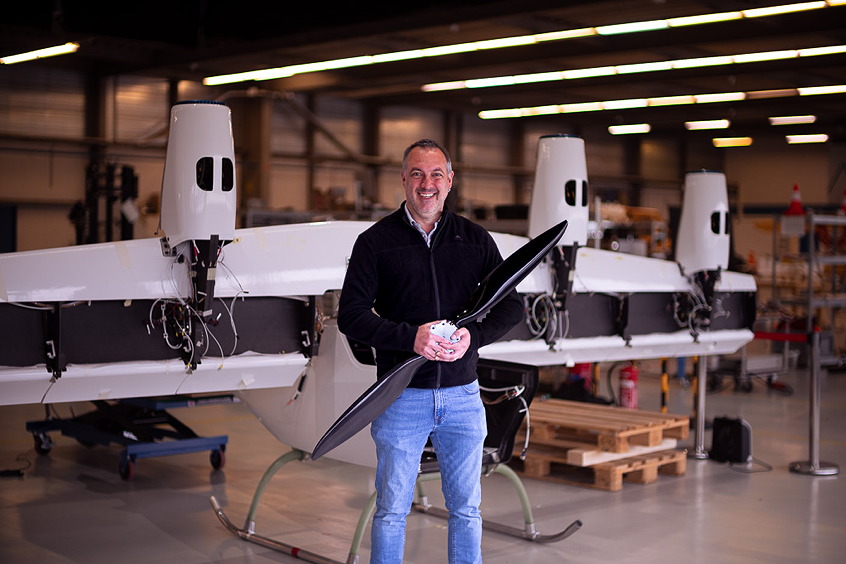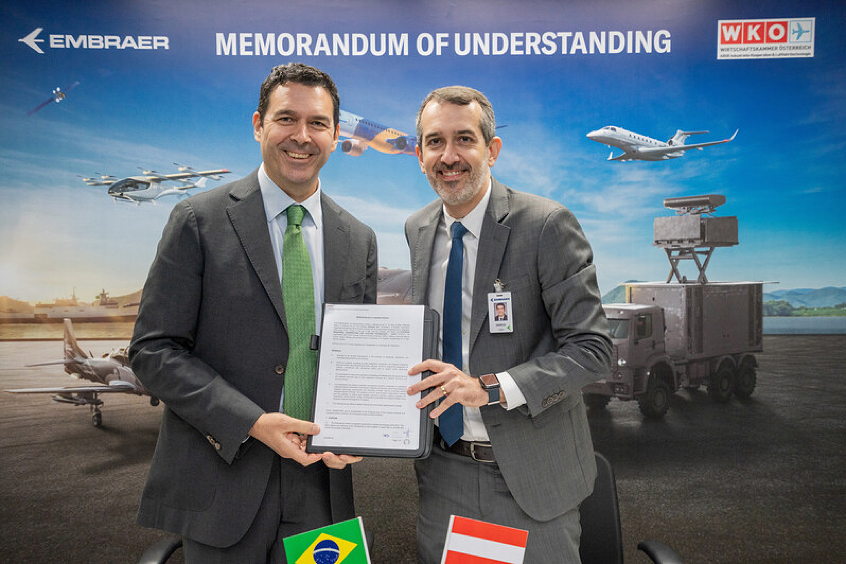CTA - Aeronautical Technologies Centre has started up the first European advanced HALT laboratory for the execution of Highly Accelerated Life Tests in the aeronautic and space sectors. The new laboratory, inaugurated the 7th of November in the Technological Park of Álava, has supposed an investment of 8 million euros.
The recently built facilities, welcomes the centre of Highly Accelerated Life Tests (HALT) technologies having a constructed surface of 2,000 square meters, on a total surface of a parcel with 8,300 square meters. The building will lodge at the end of this year three different specific test banks with vibration equipment, loads application installations and CTA own designed climatic chambers where the temperature, humidity and pressure characteristics can be varied to simulate the aircraft extreme operation conditions.
The laboratory, projected by the Aeronautical Technologies Centre - CTA, whose main patrons are Aernnova Aerospace, Industria de Turbo Propulsores-ITP and Sener Ingeniería y Sistemas (Engineering and Systems), is born with the objective to respond to the new technological and innovation needs required by the aeronautical and space sectors, demanding more and more shorter development times.
The "Highly Accelerated Life Tests" that CTA develops are oriented to shorten in a significantly way the terms of the traditional resistance and fatigue development analysis to which aero-spatial components are subjected to and are able to produce in hours or days what traditional tests can do in weeks or months. This fact makes this technology strategic to increase competitiveness and to improve the time to market.
HALT Tests characteristics
HALT tests are based in the combination of different kind of tests at the same time, including vibration in the six degrees of freedom simultaneously, temperature changes with gradients up to 60ºC per minute, that can be complemented with pressure changes, aggressive environments, electrical discharges and impacts.
The objective of these tests is to accelerate to the maximum the operative life of the components, provoking the early but representative appearance of failures due to the magnitude and change in the tensions at the specimens, much higher that the ones they can suffer during their operative life. This technology accelerates the fatigue in the products in a way that it reveals the failure modes and the reliability, allowing, if they are unexpected, to modify the design. Forcing the failures in this way allows to evaluate what, where and why every failure is produced and to start up correcting
actions. The objective, at the end, is to reduce the component development time and to increase its quality, much before getting it into the market.
The test campaigns are a critical aspect within the viability of new product development programs, due to the impact that produce in costs and deadlines. These two factors are indeed the main advantages of HALT tests, besides to make possible an increase in reliability, diminishing significantly the number of failures in the early stages.
Another particularity of the HALT tests is that instead of making the tests on a representative specimen of the production, which makes difficult any modification or improvement as a basis of the test results, HALT tests are executed in the design phase, which makes the improvement of the product possible and easier in this same phase.
At the current moment, it is possible to say that HALT tests have an important presence in the United States and at very specific sectors, like the electronic and the space one. Nevertheless, the aeronautical giants like AIRBUS and BOEING have begun to be interested in this type of tests, since the advantages that offer cannot be neglected. In a competitive world as this is, to be able to increase to the reliability reducing the cost and the so called "Time to market" wakes up the interest of all the companies.
The electrical and electronic components have been the first candidates to be tested following this philosophy, but the fan of possibilities extends to the hydraulic, electromechanical, pneumatic and, finally, certain structural components.
Finally, it is necessary to inform that the advantages of this type of tests also extend to the component and system production phases. They are denominated HASS Tests: Highly Accelerated Stress Screening. And its application is being centred in the improvement of the production processes: if we have a component whose production process is long, expensive or with a high risk nature (a high percentage of scraps exists) and we want to introduce important changes in that process to improve it, a tool that will guide us to know if the component made with the new process is comparable to the primitive one, is to carry out on both of them to Stress Screening tests (a kind of highly accelerated life) and to compare the results.
Actuators for the A400M
The first works with HALT technologies in the new laboratory are going to be actuator specimens similar to the ones CESA is developing for the A400M, the last generation cargo plane whose final assembly is made in Andalusia. CTA and CESA, company integrated in EADS group, signed last year a contract to develop and to qualify the actuators and mechanical components of the Airbus A400M. The contract is inscribed in the frame agreement reached between the two companies, after CESA becoming in the main contractor for the door and ramp actuation system of this airplane, with a total value in the life of the program of more than 130 million euros.
The joint program between CESA and CTA will give place to the development and qualification of a total of 10 types of actuators, with sizes that reach 4 meters in length and movements in several axes. The test phase of these equipment is valued 3 million euros and it will be carried out during a period of three years.
CTA is a non profit entity inscribed as a Research Centre specialized in the generation of aerospace technologies in the fields of aero-structures, aero-engines and avionics, as well as in the execution of development and certification tests of aeronautical and space components. Founded on 1997 by Aernnova (formerly Gamesa Aeronautica), ITP Industry de Turbo Propulsores- ITP- and SENER-Engineering and Systems, CTA facilities counts with a fluid-dynamic test laboratory in the Bizkaia Technological Park, where different turbine and nozzle components are experimented, as well as the structural fire and vibro-environmental laboratories in Miñano (Álava), both in the North of Spain.
The Foundation started its activity at the end of 1997, with an initial investment higher than 13 million of euros and the creation of 35 direct jobs corresponding to high qualification titleholders. At the current moment, the total investments have exceeded the 22 million euros, with a group of technologists superior to the 50 people and an income level anticipated for 2007 of around 5 million euros, that in a 50% come from first level international clients.
In these ten years of activity, CTA has developed collaborations with the biggest aeronautical companies, so that at the present time international leader companies like EADS, AIRBUS, BOEING, ROLLS ROYCE, EMBRAER, etc. have CTA as a usual collaborator in R+T activities.
| Contact details from our directory: | |
| CTA - Aeronautical Technologies Centre | Fatigue Testing, Certification Services, Testing Services, Laboratory Testing Services, Environmental Testing Services, Heat Release Testing, Vibration Testing, Test Equipment |
| Related directory sectors: |
| Test Services |
Weekly news by email:
See the latest Bulletin, and sign up free‑of‑charge for future editions.

Amprius and Stafl team up for battery pack innovation

RISE engine efficiency project gains momentum

Dufour picks Mejzlik propeller blades for the Aero2
